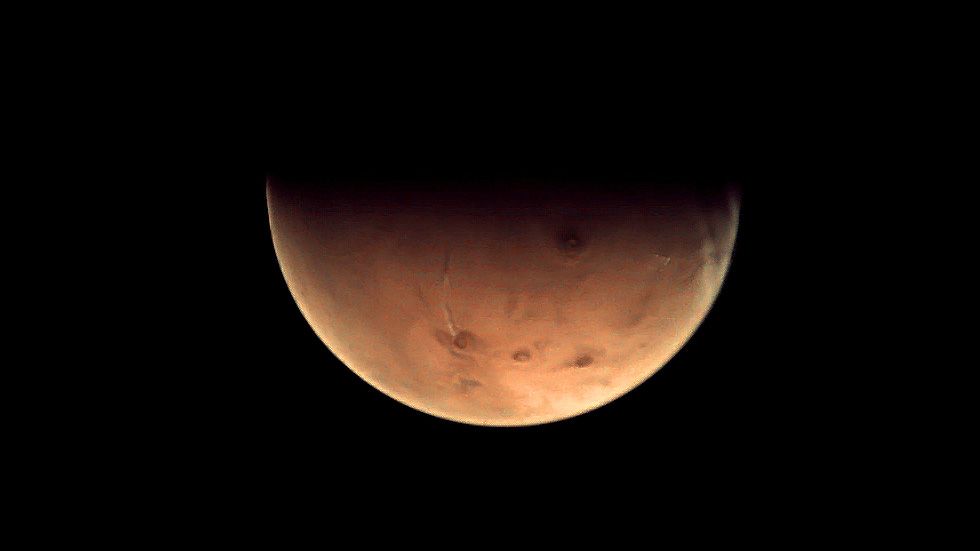New Mars Photo Christens Deep-Space Antenna

Europe's newest deep-space tracking station has received its first interplanetary message: a photo of a half-lit Mars as seen by an orbiting spacecraft.
The new Mars photo was snapped by the European Space Agency's Mars Express probe and beamed to Earth on Dec. 18, where it was received by the agency's brand-new space tracking station in Malargüe, Argentina. Argentina's President Cristina Fernández de Kirchner activated the huge antenna dish via a remote link from the country's Casa Rosada presidential palace to commemorate the event, ESA officials said.
In the Mars photo, the Red Planet appears to lie on its side with its daytime side facing down. Three huge volcano domes can be easily seen in the view, as well as several canyons etched into the Martian landscape. The Mars Express spacecraft used its low-resolution Visual Monitoring Camera to capture the image from a distance of 6,065 miles (9,761 kilometers).
The photo was sent to the Malargüe station during the site's official inauguration last week by ESA officials. It took about 18 minutes to cross the 203 million miles (327 million km) between Earth and Mars, ESA officials said.
The Malargüe antenna is one of three deep-space tracking installations that make up ESA's Estrack system. Construction of the 600-ton antenna began in 2010 and was completed this year. The site's nearly 115-foot (35-meter) dish is designed to serve as both a ground station for satellites in Earth orbit and spacecraft exploring other destinations in the solar system. The two other installations of the Estrack system are located in New Norcia, Australia, and Cebreros, Spain.
"With the Malargüe station, ESA becomes only the second space agency in the world to provide all-sky coverage for deep-space missions," ESA's Director-General Jean-Jacques Dordain said in a statement. The other space agency with the capability is the U.S.-based NASA, which operates its own Deep Space Network of ground stations.
ESA's Mars Express spacecraft has been orbiting the Red Planet since December 2003. It is currently in the midst of an extended mission that runs through 2014.
Sign up for the Live Science daily newsletter now
Get the world’s most fascinating discoveries delivered straight to your inbox.
This story was provided by SPACE.com, a sister site to Live Science. Follow SPACE.com on Twitter @Spacedotcom. We're also on Facebook and Google+.














